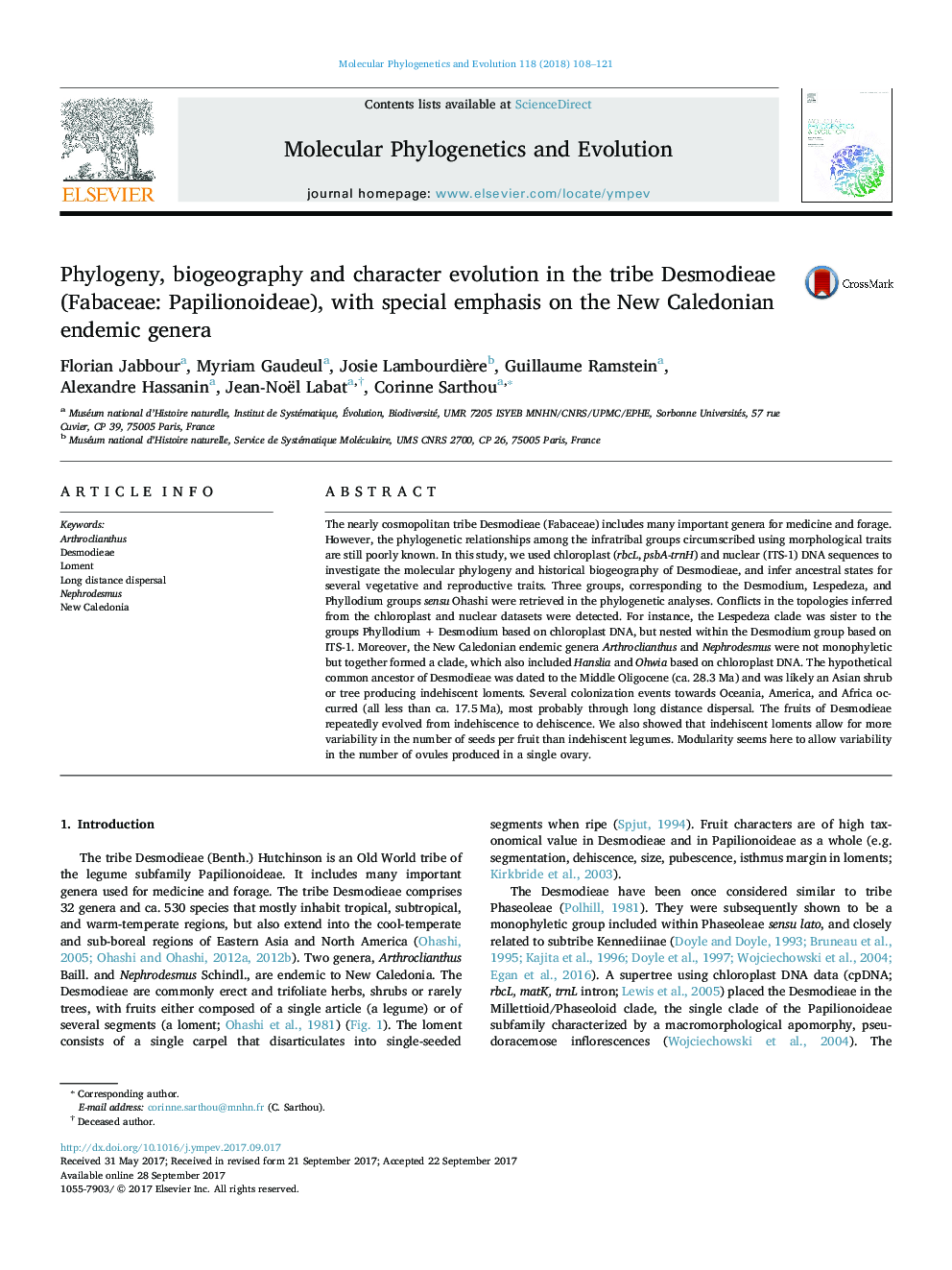| کد مقاله | کد نشریه | سال انتشار | مقاله انگلیسی | نسخه تمام متن |
|---|---|---|---|---|
| 5592230 | 1570779 | 2018 | 14 صفحه PDF | دانلود رایگان |

- We present phylogenies of Desmodieae (Fabaceae) based on a large generic sampling.
- The Lespedeza group was nested within the Desmodium group based on ITS-1.
- The ancestor of Desmodieae likely an Asian shrub or tree with indehiscent loments.
- New Caledonia (NC) was colonized once, < ca. 10.7Â Ma, by an Asian lineage through LDD.
- The NC endemic genera Arthroclianthus and Nephrodesmus were not monophyletic.
The nearly cosmopolitan tribe Desmodieae (Fabaceae) includes many important genera for medicine and forage. However, the phylogenetic relationships among the infratribal groups circumscribed using morphological traits are still poorly known. In this study, we used chloroplast (rbcL, psbA-trnH) and nuclear (ITS-1) DNA sequences to investigate the molecular phylogeny and historical biogeography of Desmodieae, and infer ancestral states for several vegetative and reproductive traits. Three groups, corresponding to the Desmodium, Lespedeza, and Phyllodium groups sensu Ohashi were retrieved in the phylogenetic analyses. Conflicts in the topologies inferred from the chloroplast and nuclear datasets were detected. For instance, the Lespedeza clade was sister to the groups Phyllodium + Desmodium based on chloroplast DNA, but nested within the Desmodium group based on ITS-1. Moreover, the New Caledonian endemic genera Arthroclianthus and Nephrodesmus were not monophyletic but together formed a clade, which also included Hanslia and Ohwia based on chloroplast DNA. The hypothetical common ancestor of Desmodieae was dated to the Middle Oligocene (ca. 28.3 Ma) and was likely an Asian shrub or tree producing indehiscent loments. Several colonization events towards Oceania, America, and Africa occurred (all less than ca. 17.5 Ma), most probably through long distance dispersal. The fruits of Desmodieae repeatedly evolved from indehiscence to dehiscence. We also showed that indehiscent loments allow for more variability in the number of seeds per fruit than indehiscent legumes. Modularity seems here to allow variability in the number of ovules produced in a single ovary.
176
Journal: Molecular Phylogenetics and Evolution - Volume 118, January 2018, Pages 108-121